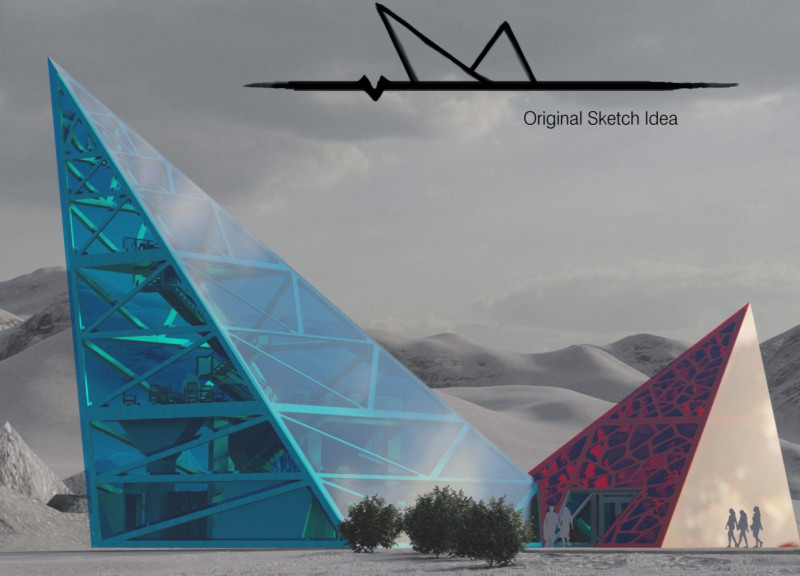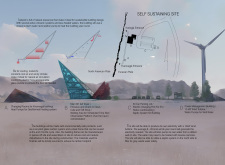5 key facts about this project
The design for Grjótagjá is located in Iceland, providing visitors with a unique exploration of the area's geological features. The main concept revolves around a triangular shape that symbolizes the collision of the North American and Eurasian tectonic plates. This design serves to create a clear landmark and connects the built environment to the natural surroundings, enhancing the overall visitor experience.
Design Concept
The triangular form serves both aesthetic and practical purposes, marking a clear entrance and guiding visitors into the space. Two overlapping triangles create a negative space that reflects the valleys formed by tectonic activities. This geometric design invites individuals to enter, drawing attention to the geological significance of the site while promoting a sense of connection with the landscape.
Visitor Experience
The design carefully considers how visitors will move through the space. Upon arrival, guests check in at a dedicated area where they can arrange times for visiting the Kvennagjá or Karlagjá caves. The inclusion of a lobby and café provides a space for visitors to relax, engage with informational displays, and shop while waiting for their scheduled visits. This encourages a deeper engagement with the environment and enhances the overall experience.
Sustainability Initiatives
Sustainability plays a vital role in the project, which incorporates features designed to ensure resource efficiency and environmental responsibility. A closed water recirculation system is included to manage heating throughout the year. Natural ventilation benefits from Iceland's cool climate, reducing reliance on energy. Plans for a wind turbine also support energy independence. These elements reflect a commitment to reducing ecological impact while embracing modern sustainable practices.
Structural Elements
Materials selected for the project align with its overall design goals. A curtain system made of recycled glass enhances the building's exterior, providing a contemporary look while adhering to environmental principles. The inclusion of a reusable steel frame facilitates off-site manufacturing and efficient assembly, streamlining the construction process.
Walking Path Modules are designed to guide visitors safely toward cave entrances. These markers are strategically spaced to ensure visibility in various lighting conditions, improving safety and accessibility in the rugged landscape. The thoughtful arrangement of these elements fosters a direct connection between visitors and the geological features, further heightening the understanding of the site’s natural history.






















































